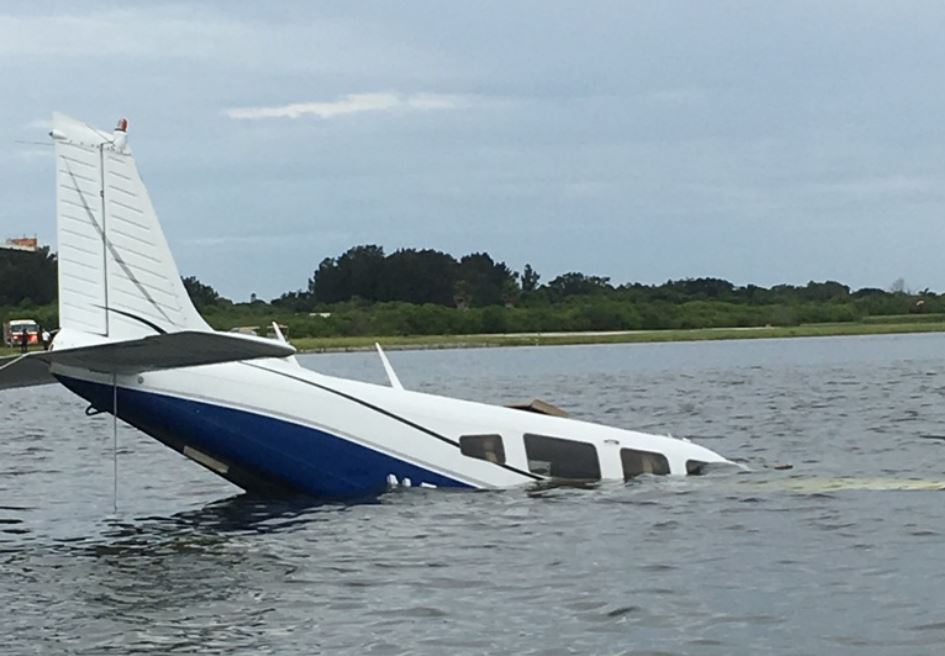
ASN Wikibase Occurrence # 199348
This information is added by users of ASN. Neither ASN nor the Flight Safety Foundation are responsible for the completeness or correctness of this information.
If you feel this information is incomplete or incorrect, you can submit corrected information.
| Date: | Sunday 3 September 2017 |
| Time: | 09:20 |
| Type: |  Piper PA-32R-300 Lance |
| Owner/operator: | Private |
| Registration: | N544DG |
| MSN: | 32R-7780440 |
| Year of manufacture: | 1977 |
| Total airframe hrs: | 1897 hours |
| Engine model: | Lycoming IO-540 |
| Fatalities: | Fatalities: 0 / Occupants: 4 |
| Aircraft damage: | Substantial |
| Category: | Accident |
| Location: | Merritt Island Airport, FL -
 United States of America United States of America
|
| Phase: | Take off |
| Nature: | Private |
| Departure airport: | Cocoa-Merritt Island Airport, FL (COI/KCOI) |
| Marsh Harbour International Airport (MHH/MYAM) | |
| Investigating agency: | NTSB |
| Confidence Rating: |
The private pilot attempted to take off for the personal flight with three passengers from a 3,601-ft-long asphalt runway. Video footage and a witness confirmed that the airplane did not rotate and become airborne until it was near the end of the runway. The nose initially pitched up about 5°, and the airplane climbed about 20 to 30 ft above ground level. As the airplane approached trees, the nose pitched up about 15° and the left wing dropped, consistent with a stall. Examination of the wreckage did not reveal any evidence of preimpact mechanical malfunctions or failures that would have precluded normal operation. Pilot estimates regarding occupant/baggage weights and the available fuel on board suggest that the airplane was slightly below its maximum allowable takeoff weight. However, although the exact baggage weight and fuel load during takeoff could not be determined, witness estimates of baggage weight and the airplane’s total capacity for usable fuel suggest that the airplane was likely at or above its maximum gross weight.
The pilot reported that he rotated the airplane at 80 knots. He also initially reported that he attempted the takeoff with "two notches" of flap extension but subsequently stated that the takeoff was with the flaps retracted. Although performance data indicate that the takeoff could be accomplished in about 2,900 ft at maximum gross weight with flaps retracted, the pilot likely did not fly the airplane at the optimal airspeeds recommended in the pilot’s operating handbook for the airplane make and model, which were 64 knots at rotation and 69 knots at an altitude of 50 ft.
Probable Cause: The pilot's inadequate preflight planning and improper takeoff technique, which resulted in an exceedance of the airplane's critical angle of attack and an aerodynamic stall.
Accident investigation:
 |
|
Sources:
NTSB
FAA register: http://registry.faa.gov/aircraftinquiry/NNum_Results.aspx?NNumbertxt=N544DG
Location
Images:

Photo: FAA
Revision history:
| Date/time | Contributor | Updates |
|---|---|---|
| 03-Sep-2017 18:51 | Geno | Added |
| 04-Sep-2017 12:33 | afm10 | Updated [Total occupants, Location, Departure airport, Narrative] |
| 04-Sep-2017 14:19 | Aerossurance | Updated [Time, Location, Departure airport, Narrative] |
| 15-Apr-2019 14:43 | ASN Update Bot | Updated [Time, Operator, Total occupants, Nature, Departure airport, Destination airport, Source, Narrative, Accident report, ] |
| 15-Apr-2019 17:04 | harro | Updated [Source, Narrative, Photo] |
Corrections or additions? ... Edit this accident description
The Aviation Safety Network is an exclusive service provided by:


 ©2024 Flight Safety Foundation
©2024 Flight Safety Foundation